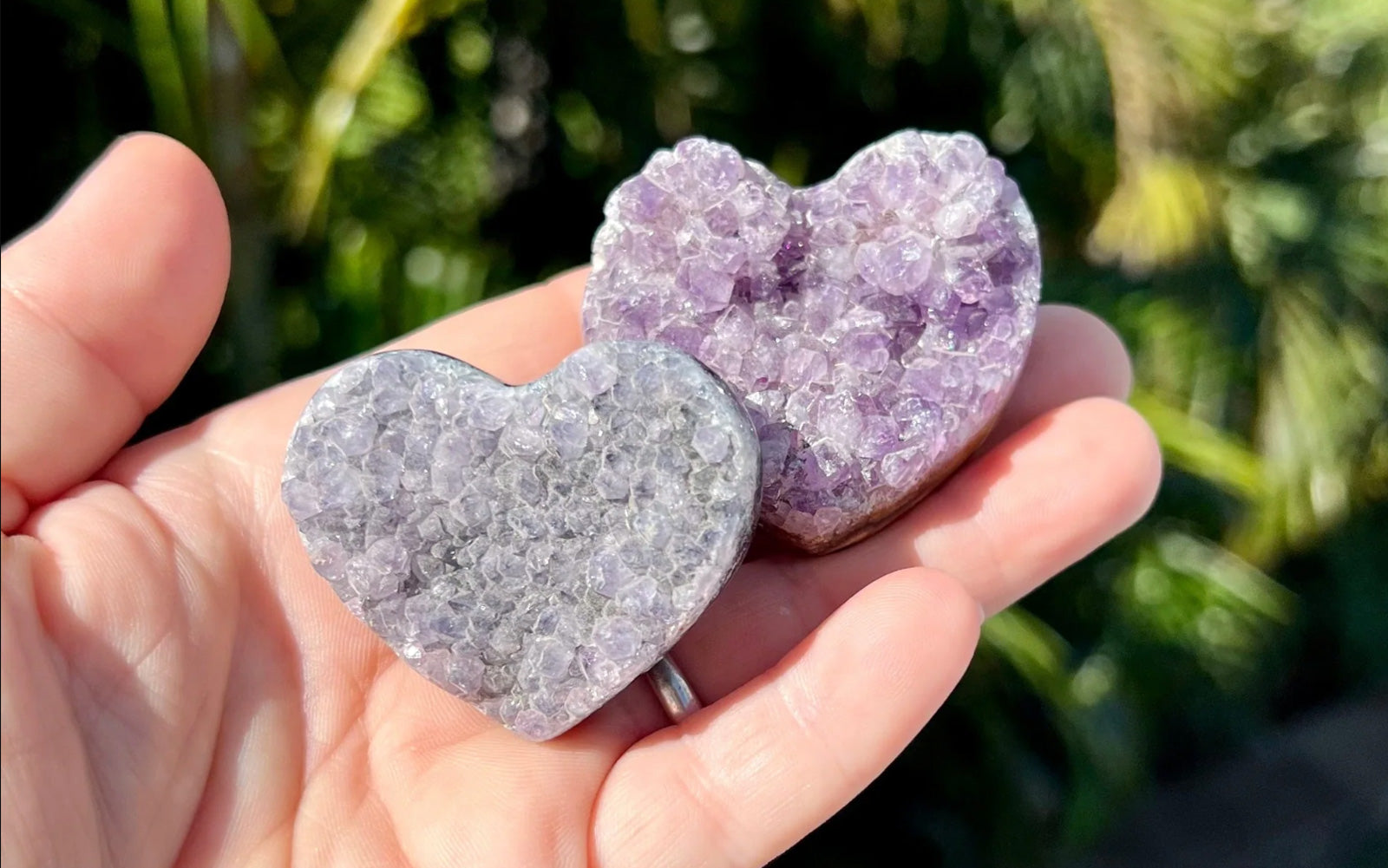
Tips and Tricks for Authenticating and Identifying Gemstones
Ever wondered if the sparkling crystal in your hand is the real deal or a convincing imitation? Identifying gemstones isn’t just for jewelers - it’s a fascinating skill that can help you spot true treasures, avoid fakes, and appreciate the beauty of nature’s finest creations. Whether you’re a collector, a buyer, or just curious, learning to identify healing crystals by their color, clarity, and unique properties can turn you into a rock-solid expert!
Why Learn How to Identify Gemstones?
The ability to identify healing crystals is essential for anyone buying, selling, or collecting precious stones. While owning a fake crystal isn’t a crime, sometimes sellers can incorrectly label their gems (even by mistake!), leading to frustration and disappointment for the buyer.
Imagine holding what you think is an authentic piece of citrine, and it turns out to be heat-treated amethyst – what a letdown! Gem identification helps prevent costly mistakes, ensures authenticity, and protects you from purchasing synthetic or altered crystals.
Crystal Processing and Gemstone Identification
Many rocks and minerals are prized for their stunning appearances – clear, sparkly crystals are typically more expensive than dull, cloudy ones. Because of their high price point, many people opt for altered, less valuable options that are processed to resemble the real thing. This makes identifying gemstones more challenging, as processed stones can look nearly identical to their natural counterparts.
How are Crystals Treated or Processed?
There are several techniques used to help enhance natural gemstones. Some of these include:
- Heat – Gemstones like amethyst, garnet, tourmaline, and Tanzanite can change colors when heated.
- Irradiation – Irradiation with X-rays is another way to change the color of a crystal. Transparent topaz can be turned into blue topaz, a rare and much more expensive stone.
- Painting and tinting – It’s common to find that some stones, like agate, turquoise, and jade, have been painted or tinted to a more desirable color.
- Stabilizing – Using resin or epoxy coating, delicate stones such as turquoise and black tourmaline can become more resistant.
- Reconstitution – In this process, crystals are ground into small pieces and glued together again. It is very common with azurite, malachite, and turquoise.
Identifying Healing Crystals: Real vs. Fake vs. Altered
As you can see, there are many ways to alter a stone, which can make the terminology of “real” versus "fake” a bit too vague for correctly identifying gemstones. Altered gems can be further broken down into three categories:
- Treated gemstones – This process improves the quality and overall look of the gem. Many of the coloring processes described above are examples of treatment.
- Synthetic gemstones – Scientists have been refining methods to create gemstones in labs since the 19th century. Precious stones like diamonds, rubies, and sapphires are often synthetically created with very subtle differences from their natural counterparts.
- Imitations – These replicas are made from glass, plastic, or synthetic resin, and are often sold as genuine crystals. Lapis lazuli, jade, and citrine are often imitated with synthetic materials.
How to Identify Authentic, Unaltered Gemstones
Identifying healing crystals is something that takes practice. It requires careful attention to the stone's physical properties and appearance. Here are some easy methods to help you recognize genuine gemstones from imitations:
- Visual inspection
- How the stone feels
- Price and quality
Understanding Visual Inspection
When using visual inspection to identify gemstones, there are a few things to look for. Natural stones typically have slight imperfections or inclusions, while synthetic or imitation stones are often flawless.
However, while inclusions are typical, natural gemstones will never have bubbles. So, if you see beautiful round bubbles when identifying your healing crystal, it’s likely not real and is probably made from glass. Lastly, while genuine gemstones may have small color variations, fake stones often appear too perfect or uniform.
Use the Feel of the Stones for Identification
You can identify a healing crystal simply by the way it feels. Hold the gemstone up to your tongue or cheek and feel the temperature. Gems tend to be cool, while glass tends to be warm.
Additionally, weight can be a great way to identify gemstones. Look up the typical weight of the authentic stone and then compare it to the one you have. For example, garnet is naturally heavy, so if the garnet you are holding is light, you most likely have a fake.
Price and Quality Can Help You Identify Gemstone Authenticity
This one is pretty straightforward! If you see a crystal that is cheaper than you would expect it to be, it is probably not real. Remember this handy tip – if it costs nothing, it probably is nothing.
3 Common Gemstone Identification Tests
When the above methods are not conclusive or you are looking for another opinion, a few tests can be run to determine the authenticity of your crystal. Here are some of the most common:
The Streak Test
This method is used to determine the color of the stone’s powdered form. The powdered form can then be used to identify healing crystals.
It is performed by rubbing the gem against an unglazed porcelain plate (streak plate) to observe the color of the streak left behind. This can help identify gemstones with similar external colors but different internal compositions.
The Hardness Test
The Mohs Hardness Scale can be used to identify healing crystals. Each stone has a specific hardness rating (for example, a diamond is a 10 and can scratch any other material), so a simple scratch test can help you determine genuine crystals versus imitations.
The Fluorescence Test
This test reveals how a stone reacts under ultraviolet (UV) light. Many crystals emit a glow or change color when exposed to UV light, helping you identify fraudulent gemstones.
Seeking Expert Advice on Identifying Healing Crystals
Seeking expert advice is essential when dealing with high-value gemstones to ensure authenticity and avoid costly errors. Rare and expensive crystals are often misrepresented or counterfeit, but an expert gemologist can verify their identity using specialized tests and equipment you may not have available. Shopping for gemstones online or purchasing from unverified sources increases the risk of acquiring misidentified or fake stones.
Identifying healing crystals requires careful observation, testing, and sometimes expert guidance to distinguish genuine stones from imitations or treated versions. While simple tests can help, expert analysis is the best way to verify high-value or rare gems. With the proper knowledge and resources, you can confidently assess gemstones and make informed decisions when buying and collecting.




